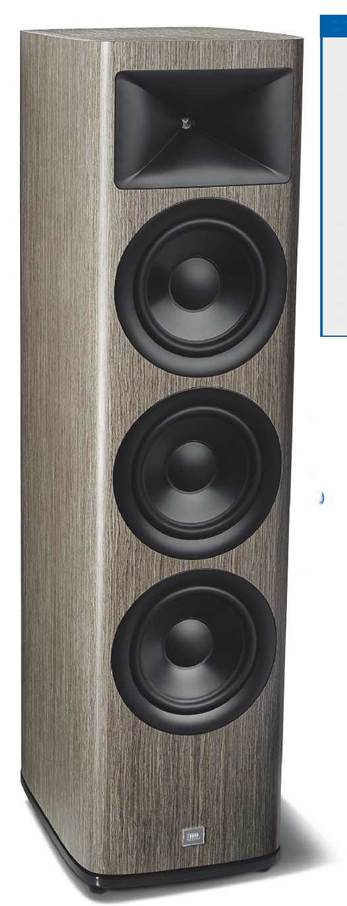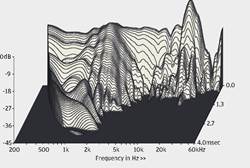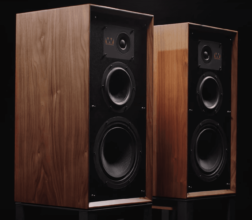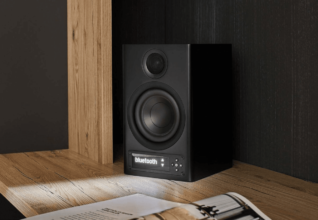JBL HDI-3800 Review
Do you miss that feeling of your chest thumping at a concert, with your whole body feeling the music? The JBL HDI series, Jbl hdi-3800 brings that experience home.
When most people think of JBL, they probably picture colorful Bluetooth speakers or the massive subs and line arrays at festivals. However, JBL’s HiFi segment has many exciting products to offer, which we want to explore with you. JBL is a well-known brand, especially for its older, large studio monitors with distinctive high-frequency configurations and horns. But did you know that JBL also offers “classic” floor-standing speakers? Although calling them classic might be a bit misleading.

In the summer of 2020, JBL introduced its completely new HDI series. This might have been overlooked by some amidst the digital flood, so we took the time to take a closer look at these exciting models, and we were not disappointed. The HDI-3800 model is the largest in the series. It is a 2.5-way floor-standing speaker with three 8-inch woofers and a tweeter that sounds truly spectacular. The four full-range models of the HDI series are based on the patented JBL 2410H-2 compression driver, which is derived from the research and applications of the JBL Professional D2 transducer series, used in the legendary JBL M2 Studio Monitor.
The heart of the 2410H-2 driver is a lightweight, ring-shaped polymer diaphragm that optimizes high-frequency extension by reducing diaphragm mass. The V-shaped geometry of the ring diaphragm reduces breakup modes and distortion. The design is perfectly matched to the patented HDI waveguide geometry, delivering high frequencies with incredible dynamics, precise reproduction, and without power loss.
Made by: Harman International Industries, CA, USA
Supplied by: Harman Luxury Audio Group, Cambs
Telephone: 01223 203200
Web: www.jblsynthesis.com
Specs
| Sensitivity (SPL/1m/2.83V – 1kHz/Mean/IEC) | 89.0dB / 89.0dB / 87.0dB |
| Impedance modulus: minimum& maximum (20Hz-20kHz) | 4.4ohm @ 129Hz 36ohm @ 59Hz |
| Impedance phase: minimum& maximum (20Hz-20kHz) | -60o@ 66Hz+55o @ 2.1kHz |
| Pair matching/Resp. error (200Hz-20kHz) | 4.6dB/ ±8.4dB/±8.1dB |
| LF/HF extension (-6dB ref 200Hz/1 0kHz) | 35Hz / 18.5kHz/17.9kHz |
| THD 100Hz/1kHz/10kHz (for 90dB SPL/1m) | 0.2% / 0.2% / 2.0% |
| Dimensions (HWD) / Weight (each) | 1101x300x418mm / 38kg |
All HDI series enclosures are made of 0.75-inch MDF with a solid internal window brace that provides a solid platform for the drivers. The enclosures are tuned with a bass-reflex design featuring rear-firing, computer-optimized ports. High-quality crossovers ensure crystal-clear sound, while two gold-plated terminals provide secure connections to accompanying amplifiers. The cabinet is finely veneered, and the edges are acoustically and aesthetically rounded. Despite its massive dimensions, the HDI-3800 remains unobtrusive in the room thanks to its simple design. Unfortunately, there are only a few color options available so far.
It’s important to note that this is an import product. For many, it’s now relevant to know where products are built and how they are made. In this case, the concept and engineering come from the USA, but the HDI-3800 is manufactured in the People’s Republic of China. You might notice this only in the minor spacing of the driver cutouts, indicating that it is a mass-produced speaker. However, do not let this deter you, as the associated prejudices are misleading. We aim to be transparent and honest, like a good speaker.
Sound
We tested the HDI-3800 with some amplifiers to be safe, and we were not prepared for what we heard when we first turned up the volume. The power unleashed by the three woofers can be described as biblical. This is further proof that JBL subs and bass have a unique signature. This is a specialty where the Americans excel. But the tweeter is also impressive. The waveguide or horn construction provides beautifully natural dispersion and a fidelity that we only know from this design. As a whole, the HDI-3800 sometimes sounds like a full-range one-way system due to its immediacy. Although the top woofer is designated as such, we had the impression that the crossover makes a distinction, contributing more mids. A quick look at the documentation confirms crossover frequencies at 800 Hz and 1,800 Hz.

This speaker has a lot of attitude and quickly flexes its muscles. Hip-hop, electronic music, pop, and rock are its forte. Anything that would go through the PA at a live concert sounds just like it on the HDI-3800, as if you were at the front-of-house. What truly impressed us was its unbridled musical performance—typical American charisma. Even over 120 dB SPL (A) at three meters distance from the listening position is no problem for the HDI-3800. Many might recoil or shake their heads, and we know that such volumes are unhealthy over time. It always depends on the frequencies.
The HDI-3800 has its own approach, gaining contour but losing sharpness at higher volumes as the bass increasingly dominates. This natural leverage effect means that both quiet and Rammstein-level volumes maintain a homogenous and aesthetic sound. The feeling of 120 dB in the living room is like a wind machine. We were sure we could skip spring cleaning this year; the power of the HDI-3800 cleared the dust from every corner. When you turn the volume down, you can see the dust shimmering in the air.
Can the HDI-3800 also handle quiet music, cinema, or classical? Yes, it can, but saying it excels at these genres would be an exaggeration. The only classical music that sounds exceptionally good on the JBLs is church organ recordings. Churches have long known how to manipulate people with large spaces and sonorous sounds that make a building tremble. So, the HDI-3800 is not entirely neutral in its sound, but it makes listening to music incredibly enjoyable because it lives and sings along like a good friend who loves the same music. We can overlook timing inaccuracies in these cases, just like at a real festival.
Even if we might not experience real concerts this year, your teenagers won’t be able to destroy these speakers at their next illegal party while you’re away. The roof tiles would come off first. Ask our editor-in-chief, who sat on the second floor and experienced our test in the ground floor office via body sound transmission. Do you have good liability and household insurance? The JBL HDI-3800 is a sonic weapon!

Performance Measurement


When you purchase through links on our site, I may earn an affiliate commission. Here’s how it works.









